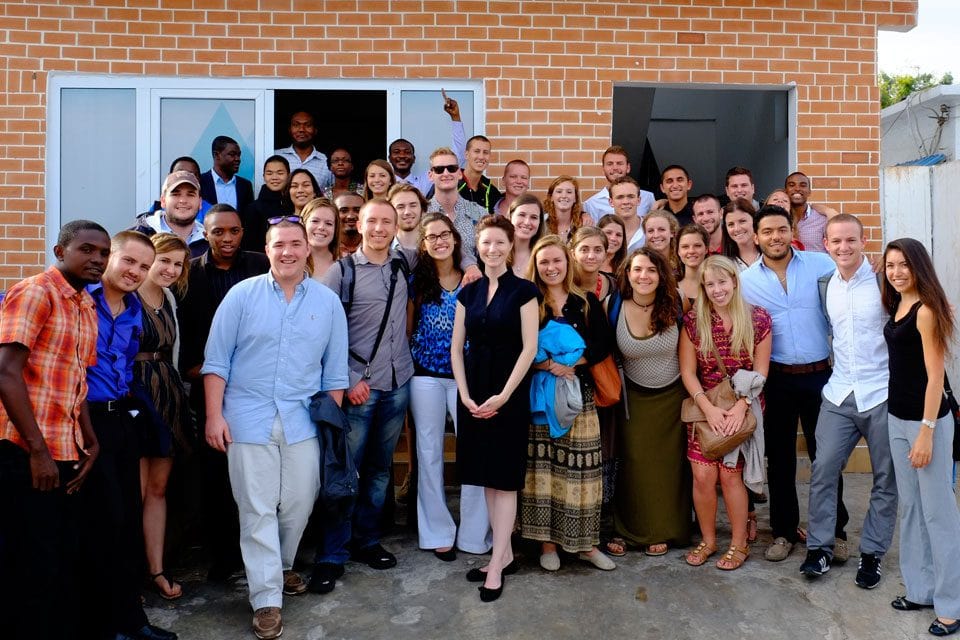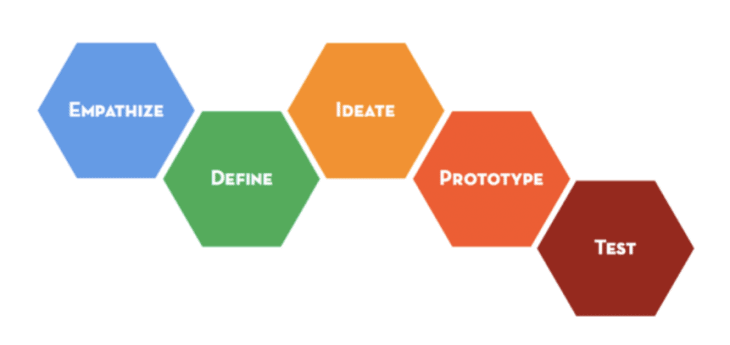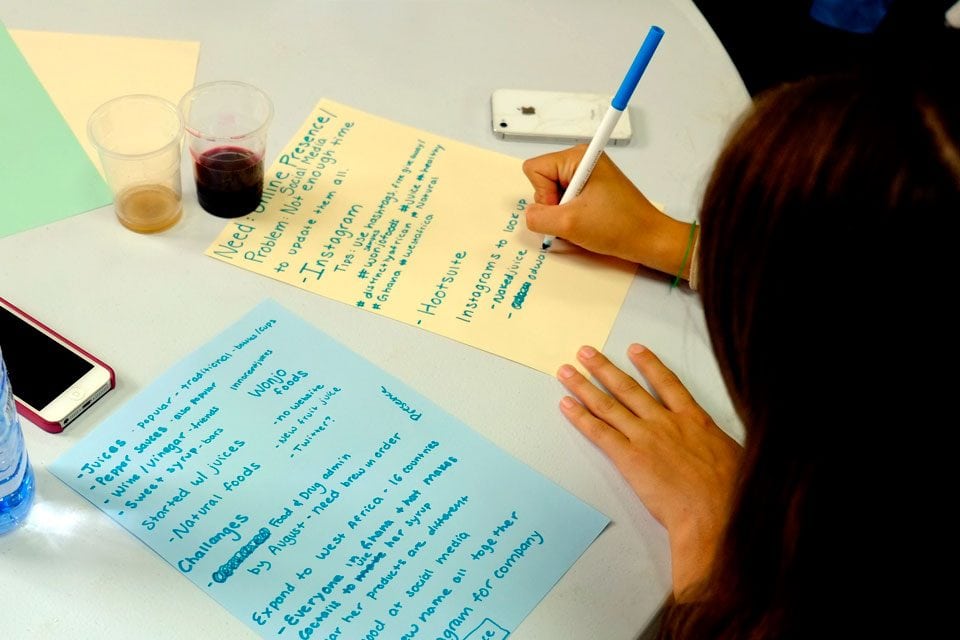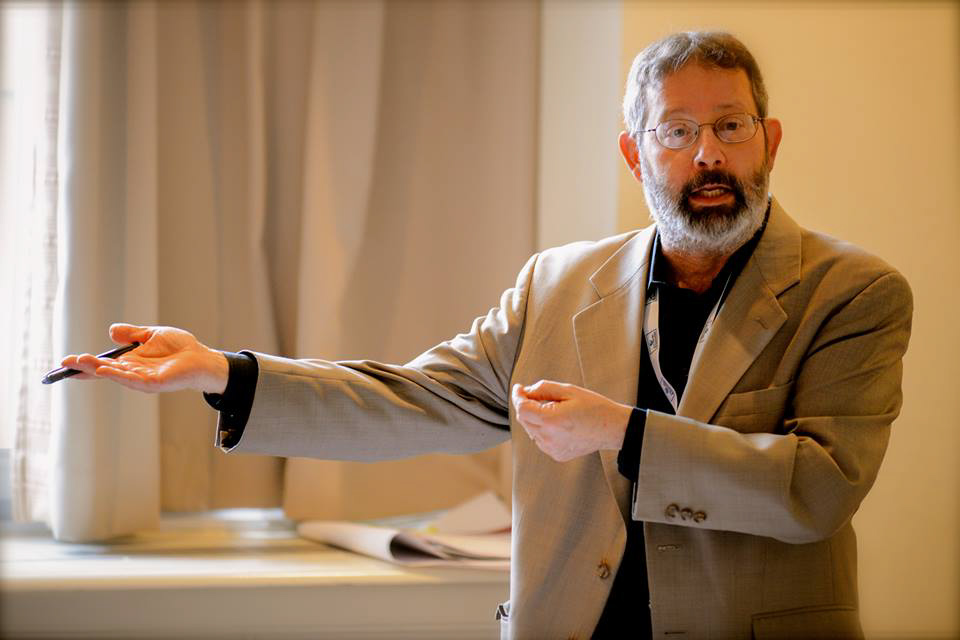
From day one, students in Christine Mahoney’s Sustainable Global Entrepreneurship class have employed different design thinking models to explore how best to launch social ventures, spur innovation and generate unique solutions to pressing global issues. Through case studies, simulations and a variety of guest speakers, students were able to master the tools necessary to become effective entrepreneurs. But how do these lessons transfer outside of the classroom and into the real world? Upon visiting Hub Accra in Ghana, their new skills were put to the test.
Hub Accra is an entrepreneurial incubator that serves as an informal office space for aspiring business owners. Within the modest two story building, young entrepreneurs can use Hub Accra’s facilities and services ‚Äìhigh speed internet, projectors, meeting rooms, networking events, etc‚Äì to transform their idea into a profitable endeavor.
After a brief introduction from the founder William Edem Senyo, SAS students were split into five different tables and paired with a Ghanaian entrepreneur. Under Mahoney’s guidance, each group worked through the five step Design Thinking Model to improve upon each Ghanaian venture:

The first step is to Empathize and understand the small business. Students interviewed their Ghanaian entrepreneurs to ascertain what major challenges their business was facing. For example, Alfred R. Rowe, the owner of Egotickets (the emerging Ticketmaster of Ghana) shared that one of his main barriers to success was that people just didn’t trust using their credit card to purchase tickets online. By empathizing and listening, students were able to clearly Define the problem which is the next stage in the Design Thinking process.


After defining the problem, Mahoney had the students move into the Ideate step. In a positive and supportive environment, students brainstormed and considered every type of solution to the problem and chose what they thought to be the most plausible.

By using the paper and markers provided, each group was then responsible to produce a Prototype or physical representation of a solution to the problem. Some students drew basic mobile apps and others illustrated what a small promotional event would look like. These prototypes and possible solutions were then pitched to the rest of group and Tested to see whether others thought the idea was viable.
Karla Cremer, a gap year student from Germany, was impressed by how receptive the Ghanaian entrepreneurs were to their ideas.
I loved to see how surprised they were to see that our ideas were creative, innovative and worthy to be included in their business.

At the end of the day, the group informally networked and exchanged information with all of the Ghanaian business owners. Many students expressed their interest in keeping in touch and seeing if any of their ideas are incorporated into the Ghanian’s businesses. Kremer felt the field lab was a success and will benefit her even after Semester at Sea ends:
We have made project and business connections all around the world and have entered the global movement of generational change-makers, who will address global issues with a socially aware, entrepreneurial approach.



